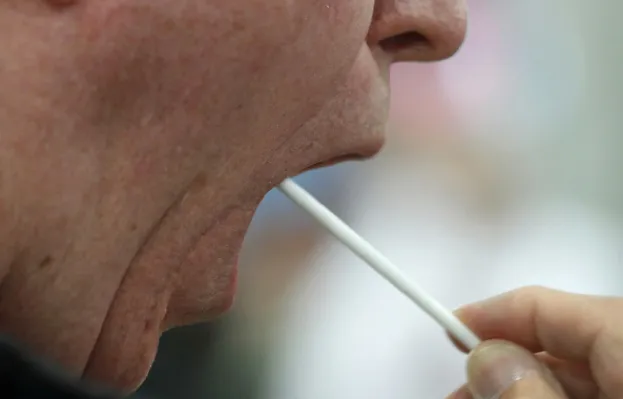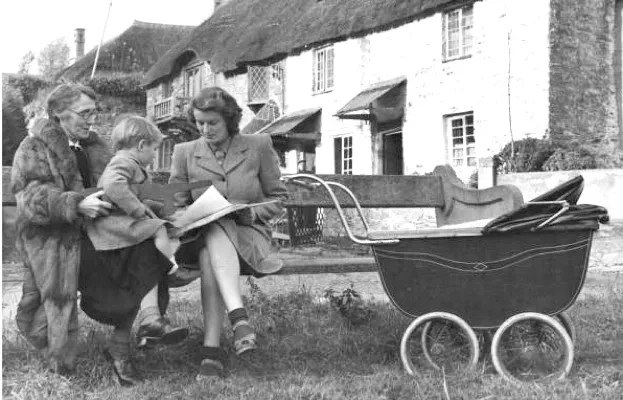DNA testing is increasingly important in family history research, allowing family historians to break down brick walls and discover new relatives. But did you know that there are three different types of test - autosomal DNA, Y-chromosome DNA (Y-DNA) and mitochondrial DNA? Here, we explain what they’re used for, and how each one can help you with your family history research.
Autosomal DNA: What is it?
What is autosomal DNA testing?
The autosomal DNA test is the most common commercial DNA test. The most popular autosomal DNA test in the UK is sold by Ancestry and this has led to it having a very large matching DNA database, but other companies such as Living DNA and MyHeritage also offer autosomal DNA test kits.
An autosomal DNA test can be taken by both males and females.
Autosomal DNA is contained in the autosomes that we inherit from both of our parents. The autosomes are the chromosomes other than the two sex chromosomes (X and Y) which contain most of our DNA sequences and genes.
Autosomes come in pairs. We receive one set of 22 autosomes from our mother and one set of 22 autosomes from our father. Before the DNA is passed on it is shuffled up in a process known as recombination. The DNA we inherit from our parents is therefore a patchwork of DNA from all four of our grandparents.
What will an autosomal DNA test tell you?
An autosomal DNA test will put you into a matching DNA database and give you a list of genetic relatives who could be related on any ancestral line. Ancestry's DNA database is the largest and can a high likelihood of matches. It will also give you a biogeographical ancestry or 'ethnicity' estimate. Living DNA has partnered with various academic projects giving it excellent biogeographical accuracy for the UK as well as some other areas. MyHeritage also has a strong European and Jewish database.
How do autosomal DNA tests work?
Autosomal DNA tests identify your cousins and other distant family by looking at the number and size of shared DNA segments. In general, the more segments that are shared and the longer the segments the closer the relationship.
Autosomal DNA tests can accurately identify relationships up to the second cousin level, but it is more difficult to verify relationships beyond about five or six generations because of the wide range of possible relationships and the limitations of genealogical research. If you only share a single small segment your match could be your fifth cousin or your fifteenth cousin, but we have no way of knowing which is which.
With DNA testing it always helps to start with the known to get a feel for how the tests work and then work out to the unknown. You should try and encourage as many close relatives to test as possible. If you test your parents you will be able to partition your matches onto the paternal and maternal sides. If your first or second cousins test then you will know that any matches you share with your cousins must be related through your common grandparents or great grandparents. The more matches you are able to confirm with known relatives the easier it becomes to work out the unknown relationships. Always focus on your top matches where you stand the best chance of making connections.

Y-DNA: What is it?
What is Y-DNA testing?
Y-chromosome DNA (Y-DNA) is passed on by a father to his sons, and the transmission usually follows the inheritance of surnames. Unlike an autosomal DNA test, the Y-DNA test can only be taken by males. Females will need to find a suitable candidate for a Y-DNA test such as their father, brother, uncle or cousin.
What will a Y-DNA test tell you?
Tracing your male line using Y-DNA testing will help you verify existing research, explore which different surname lineages are related and investigate variant spellings. Y-DNA test results are best co-ordinated within a structured surname project where the results can be clustered into “genetic families”. Y-DNA can also be used to trace illegitimate lines. A match with a different surname might provide a clue to the identity of the biological father. FamilyTreeDNA is the market leader for Y-DNA testing and is used by many one-name studies.
How do Y-DNA tests work?
Y-DNA tests test markers known as STRs (short tandem repeats). These are repeating sequences of DNA letters. The number of repeats is added up and for each marker you are given a number. Your numbers are compared with the other people in the testing company’s DNA database and you are given a list of your Y-DNA matches whose numbers most closely match yours. The 37-marker test is the standard entry-level Y-DNA test, but tests are also available at 67 and 111 markers as well as the Big Y-700 product launched by FamilyTreeDNA which now offers unprecedented levels of information.
A Y-DNA test also provides information about your deep ancestry through the haplogroup assignment. A haplogroup is a branch on the Y-chromosome tree. Each haplogroup has its own distinct geographical distribution. The haplogroup is predicted from the STR results but a more refined haplogroup assignment can be obtained by testing different types of markers known as SNPs (single nucleotide polymorphisms). Some companies include Y-DNA haplogroup information in their test but this can’t be used for genealogy purposes.
Mitochondrial DNA: What is it?

What is mitochondrial DNA?
Mitochondrial DNA is the chromosome found inside the mitochondria of each cell of your body. Children of both sexes inherit mitochondrial DNA from their mother. A mitochondrial DNA test can therefore be taken by both males and females, and is used to explore the direct maternal line. The most popular mitochondrial DNA test is offered by FamilyTreeDNA but Living DNA also includes basic mitochondrial haplogroup testing in its standard product.
What will a mitochondrial DNA test tell you?
It is not so easy to use mitochondrial DNA testing for family history because most women changed their surnames when they got married, making it harder to trace the maternal line and identify distant relatives using mitochondrial DNA. Furthermore, mitochondrial DNA mutates very slowly which means that, even if you have a very close match, the common ancestor might well have lived a thousand or more years ago.
Mitochondrial DNA can be helpful when used in combination with autosomal DNA testing to rule matches in or out on the matriline.
With a mitochondrial DNA test you will also get a haplogroup assignment, which will provide information about your deep ancestral origins on your matriline. The various haplogroups have distinct geographical distributions, and can sometimes provide important clues in their own right. For example, haplogroup M is commonly found in India, so if someone of British ancestry were to test with haplogroup M it would potentially open up a new line of enquiry in the former British India.
